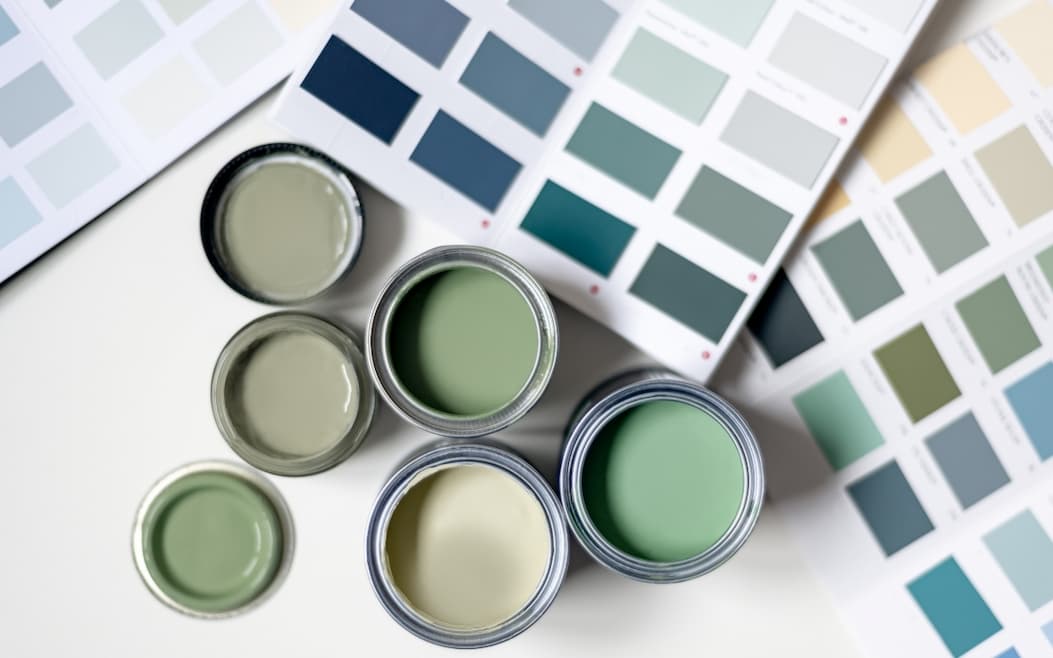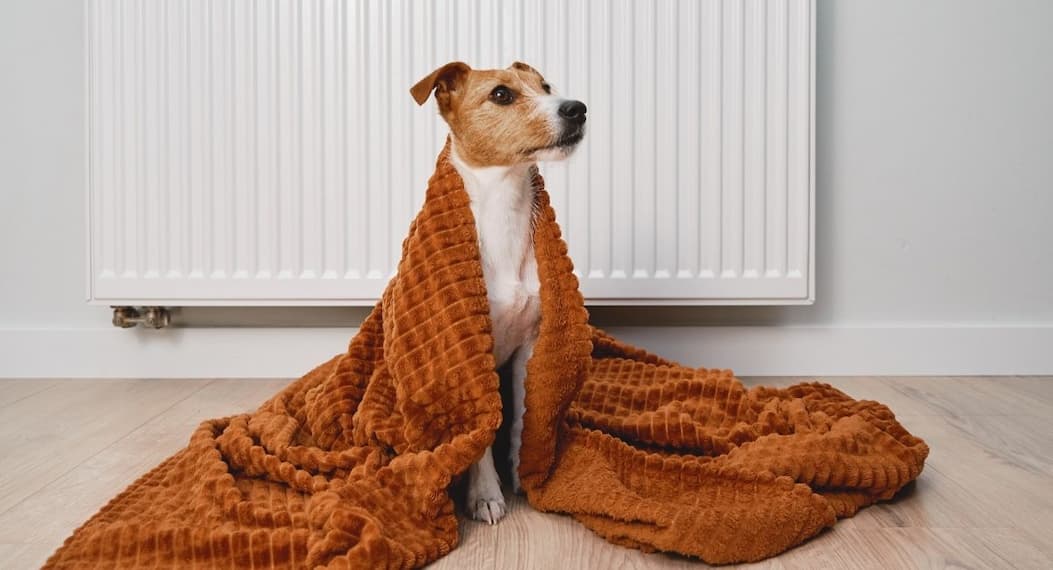The Great Paint Debate: How Toxic Are Your Walls?

That "New Paint Smell" is Actually Your Home Off-Gassing Toxins
Here's what I wish someone had told me when we bought our first house: that satisfying "fresh paint" smell is actually volatile organic compounds (VOCs) evaporating into the air you're breathing. VOCs are chemicals that easily become vapors or gases at room temperature, and they're found in most conventional paints, primers, stains, and yes - wallpaper too.
The stats are kind of wild: conventional paint containing VOCs can off-gas for YEARS after application (not just during that initial "new paint smell" phase). Off-gassing is when a new product - like a mattress, furniture, or paint release chemicals as they “air out” over time. We're talking about chemicals like formaldehyde, benzene, toluene, and acetone - the same stuff you'd avoid in your beauty products or cleaning supplies, but somehow we're coating our entire homes with them? The Clean Air Act limits paint to no more than 250 grams of VOCs per liter of flat paint.
VOC exposure has been linked to headaches, dizziness, respiratory issues, and eye irritation in the short term. Long-term exposure? We're looking at potential liver, kidney, and central nervous system damage. And here's the kicker: indoor air quality is often 2-5 times worse than outdoor air quality, partly because of these off-gassing materials.
Beyond what it does to our bodies, the production and disposal of conventional paints creates a massive environmental footprint. In the US alone, the paint industry produces over 1 billion gallons of paint globally each year, and approximately 10% of that ends up as waste. When improperly disposed of (like pouring it down the drain or tossing it in regular trash), those chemicals leach into soil and water systems.
What About Wallpaper?
Traditional wallpapers come with their own set of issues. Many contain vinyl (hello, plastic), which releases phthalates and other chemicals. The adhesives used to hang wallpaper can also be loaded with VOCs and formaldehyde.
And here's something I learned the hard way when we tried to remove the previous owner's questionable floral wallpaper in our basement: removing old wallpaper often requires chemical strippers that are... you guessed it... full of toxic substances. Plus, older wallpapers (pre-1978) may contain lead or arsenic-based pigments. And in the words of Annie from Cell Block Tango: “Some guys just can’t hold their arsenic.”
The production of vinyl wallpaper also involves PVC (polyvinyl chloride), one of the most toxic plastics to manufacture and dispose of. When PVC is produced or burned, it releases dioxins - highly toxic compounds that persist in the environment and accumulate in the food chain.
How To Choose Better Paint
What to Look For:
- Zero or Low-VOC: Look for paints with less than 5 g/L of VOCs (zero-VOC) or under 50 g/L (low-VOC). But here's a pro tip: "zero-VOC" base paint can still have VOCs added when tints are mixed in, so ask about the final VOC content after tinting.
- Third-Party Certifications: GREENGUARD Gold, Green Seal, or LEED certification mean the paint has been independently tested for low chemical emissions.
- Natural Paints: Look for paints made from natural ingredients like clay, plant oils, and mineral pigments.
Brands We Love:
ECOS Paints: Zero-VOC, zero-emission paints that are safe for chemically sensitive individuals. They're made in the USA and come in over 1,000 colors. I used their paint in our nursery and had zero regrets (or fumes).
The Real Milk Paint Co.: Made from milk protein, lime, clay, and earth pigments. It's been used for centuries (think colonial homes), is completely non-toxic, and biodegradable. The downside? It requires a bit more prep work and mixing, so it's not quite as convenient as conventional paint.
Clare: This direct-to-consumer brand offers low-VOC paints and makes it super easy to order samples and get exactly what you need delivered to your door. Their packaging is also recyclable and they have a paint recycling program.
Benjamin Moore Natura: Zero-VOC and zero emissions, available at most hardware stores. This is a great option if you want to go with a classic, more established company.
Farrow & Ball: While pricey, their paints are water-based, low-VOC, and they've reformulated their entire range to be more environmentally responsible. Plus, their colors are chef's kiss.
Better Wallpaper Options
What to Look For:
- Non-vinyl options: Look for wallpapers made from paper, fabric, or grasscloth
- Water-based adhesives: Skip the toxic glues
- Natural fibers: Wallpapers made from sustainable materials like bamboo, cork, or recycled paper
Brands Doing It Right:
Feathr: Creates wallpapers from sustainably sourced paper with water-based inks. They're PVC-free and work with independent artists for unique designs.
Juju Papers: Makes 100% renewable, FSC-certified wallpapers using non-toxic inks and water-based adhesives.
Grow House Grow: Offers grasscloth and natural fiber wallpapers that are biodegradable and chemical-free.
SUSTAINABILITY 101
The Right Way to Dispose of Paint
Okay, so you've finished your painting project and you have half-full cans of paint sitting in your garage. What do you do with them?
What NOT to do:
❌ Pour it down the drain (this contaminates water systems)
❌ Throw liquid paint in the trash (it's considered hazardous waste)
❌ Leave cans outside to "dry out" and then toss them (this releases VOCs into the air)
What TO do:
- Use it up: The best option is to actually use all the paint. Touch-ups, small furniture projects, or donate to a community center, school, or theater group.
- Dry it out properly: For latex paint, you can dry out small amounts by removing the lid and letting it harden (add kitty litter or sawdust to speed this up). Once completely dry, you can dispose of it in regular trash in most areas. Check your local regulations first!
- Hazardous waste collection: Most cities have hazardous waste drop-off days or permanent collection sites. Find yours at earth911.com.
- Paint recycling programs: Many paint retailers (like Home Depot in some states) accept old paint for recycling. In states with PaintCare programs (currently 11 states plus D.C.), you can drop off paint at participating retailers for free recycling.
Pro tip: Oil-based paints, stains, and solvents are ALWAYS considered hazardous waste and must be taken to a hazardous waste facility. No exceptions.
I get it. Sustainable paint is often more expensive, and you might not have access to hazardous waste drop-off in your area. But here's what I've learned: investing in low-VOC or zero-VOC paint is investing in your health and your family's health. You're literally surrounding yourself with these materials every single day.
Start where you can. Maybe that means choosing better paint for the bedrooms and nursery, even if you use conventional paint for the garage. Maybe it means properly disposing of old paint instead of dumping it. Progress over perfection, always.
And if you're planning a painting project soon, do yourself a favor and spend the extra 20 minutes researching better options. Your lungs (and the planet) will thank you.
Subscribe now to continue reading.
(16% discount)
• Access to unlimited articles
• Sustainable product guides & recommendations
• Weekly newsletters
Already a member? Log in.













